Visit Cotopaxi National Park during your stay in Quito
When we search for Ecuador on the internet, it’s not uncommon to see pictures of Cotopaxi volcano – one of the country’s most famous snow-capped and conically-shaped volcanoes. Cotopaxi is a photographic, geological and overall sentimental icon in the hearts of many, if not all, Ecuadorians. Visitors fall victim to the beauty of the volcano as well, loving and admiring its enchanting features. When flying into Quito during the day, people can often appreciate its majestic shape through their airplane window, but that’s not to say that Cotopaxi can also be seen from various points in Quito and the central highlands. Like a guardian that looks over the capital city and its surrounding towns, this active volcano is part of the daily landscape that quiteños are used to, amazing visitors and locals alike every time it graces the horizon. Indeed, whenever there’s a clear day and Cotopaxi is visible in the distance, everyone, anywhere, immediately stops whatever it is that they are doing to admire the giant. One thing that can be said about this beautiful volcano: it is absolutely mesmerizing! When traveling to Ecuador, visitors frequently ask how to visit Cotopaxi? Read on to learn more about this iconic mountain and how to get close to its impressive slopes!
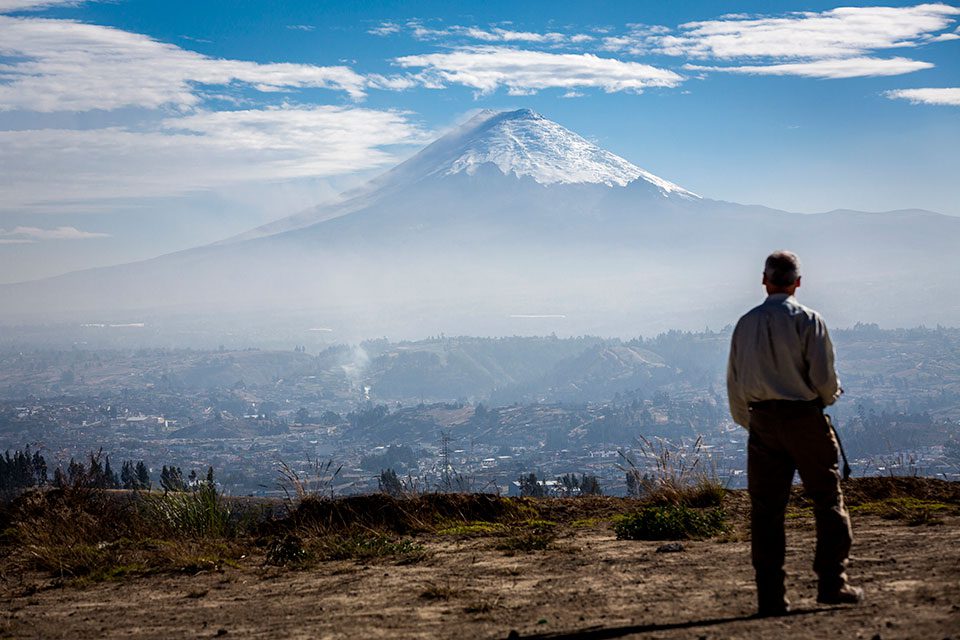
First Things First: What is Cotopaxi volcano?
Cotopaxi volcano is Ecuador’s second tallest active volcano and a favorite among mountain climbers, locals and visitors. Because Cotopaxi is a stratovolcano, the first thing about it that catches everyone’s attention is its imperfectly-perfect conical shape, which is a result of its periodic explosions that have built up layers (or strata) of hardened lava, pumice and ash overtime. During explosions, lava from this type of volcano hardens rapidly due to its high viscosity, contributing to the formation of the layers that give it its distinctive shape. Cotopaxi is Ecuador’s second highest volcano, with a height of 5,897 m (19,347 ft). It’s also the world’s fifth highest active volcano! The third one in this ranking is actually Ecuador’s own tallest mountain and the closest point on Earth to the sun. Do you know which volcano we are talking about? If you guessed Chimborazo, you were right! This massive mountain is even taller than Everest, if measured from the Earth’s core!
Fun fact: Cotopaxi means “neck of the moon” in kichwa
TALK TO A DESTINATION EXPERT

Diego Zapata

Rosa Mena

Sandy Lara

Diego Zapata

Rosa Mena

Sandy Lara
Where is Cotopaxi located?
Cotopaxi is located inside the Cotopaxi National Park, a 35,984 ha (88,920 ac) reserve, approximately 50 km (31 mi) away from Quito, in the province of the same name. A two-hour drive takes you along the capital city, out into the suburbs and then the rural areas. Beautiful rocky mountains, old haciendas, colorful towns and crops flank the main highway and make for an amazing Andean view while on your way to the magnificent volcano. On a clear day, the Cotopaxi volcano is seen from Quito and accompanies travelers along the way. Observe the agricultural town of Machachi, located in Cotopaxi’s northern valley and stop in Latacunga before heading to the National Park’s entrance for some traditional chugchucaras.
Is Cotopaxi volcano currently erupting?
Since 1738, records show Cotopaxi volcano has exploded more than 50 times. The various eruptions have resulted in the creation of the many valleys that surround its steep slopes and that are part of its impressive scenery. Cotopaxi’s last eruption started three years ago and lasted from August 2015 to January 2016. During this time, the Cotopaxi National Park was closed to the public and eruption drills were implemented in the neighboring towns and cities. Once the volcano’s activity decreased, the park re-opened its doors to visitors. However, it wasn’t until October 2017 that Park authorities allowed climbing again. Cotopaxi is a coveted mountain for climbers who like adrenaline and adventure!
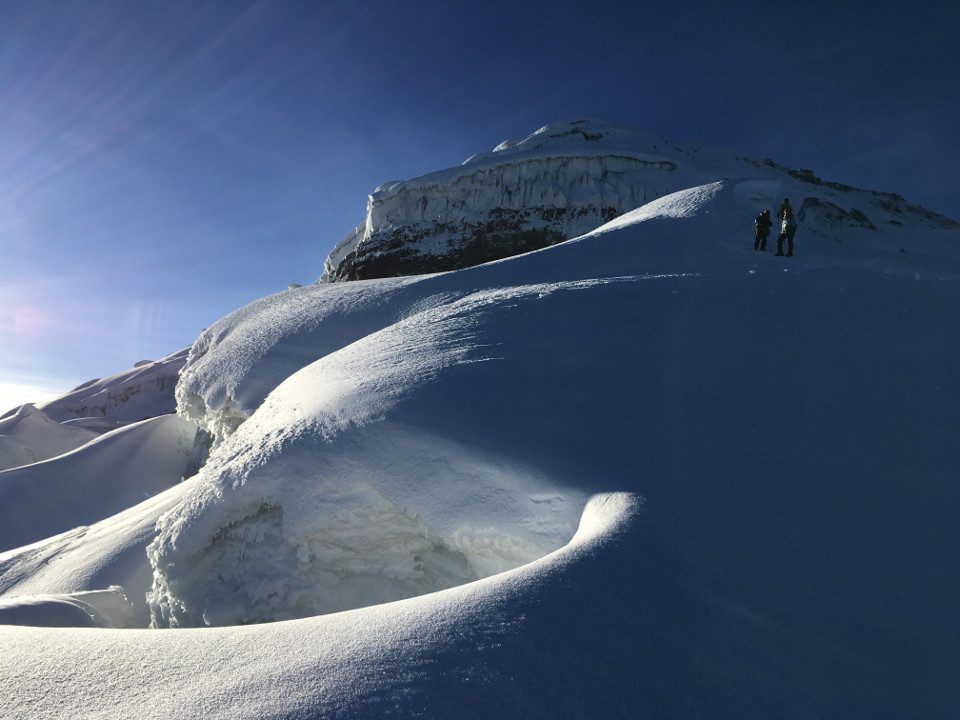
How to visit Cotopaxi National Park?
You can always visit Cotopaxi National Park using public transportation. These buses will drop you off at the exit for the Cotopaxi National Park, right off the main highway. From there, you still have a stretch of road to get to the Park’s entrance. The safest and most comfortable way to visit it is to book a day-tour with a guide and private transportation. Doing so means you won’t have to worry about which bus you need to take, the logistics of getting to and around the park, and/or scheduling other transportation to drive you back to the highway. When traveling to a new destination, choose the company that will make everything run smoothly. One of the best ways to enjoy a place is to know everything will be taken care of – from eating at the best spots to being introduced to the people and traditions of an area. So, sit back and have someone else worry about the necessary details of your trip.
Going back to the subject at hand: the park is a beautiful place to walk around in and soak in the impressive landscape, with towering Cotopaxi and neighboring mountains such as Sincholagua and Rumiñahui looking over you. However, because it’s such a big place, it will be easier to move around in hired transportation. This way, you will be able to go as high up as the parking lot for Cotopaxi’s Refuge. From there, if you’re willing, you can even take a short hike up to the volcano’s Jose Rivas Refuge. Your guide will instruct you on the proper way to walk up at these higher altitudes.
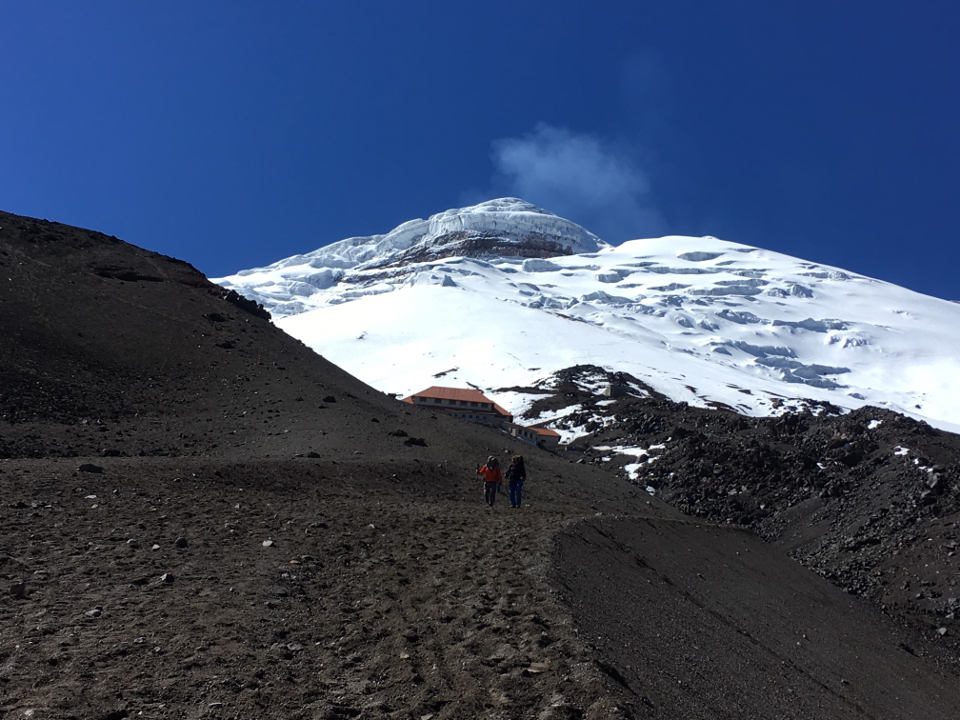
What are effective ways to prevent altitude sickness?
Everyone reacts differently to altitude. Some don’t feel it, and others feel short of breath with the slightest bit of physical effort. It doesn’t matter if you are the fittest person on the planet or never exercise: you need to acclimatize properly to avoid the lack of oxygen. That’s why we recommend visiting Cotopaxi volcano after a day or two of being up in the highlands. And why not visit Quito’s World Heritage downtown while you’re adjusting? Stay at the old town’s best-located hotel and feel the energy of this vibrant city!
Doing so will allow your body to get used to having less oxygen, and you will not feel your heart rate accelerate once you get to Cotopaxi. However, hydration is essential to remember before exposing yourself to higher altitudes. The more hydrated you are, the less likely you’ll be affected by the higher altitude. Because having less oxygen makes our blood thicker – hence the feeling of dizziness and/or headaches, etc. – keeping our blood flow as fluid as possible will prevent us from getting altitude sickness.
How to visit Cotopaxi’s refuge on your own?
Jose Rivas Refuge, otherwise known as Cotopaxi’s “base camp,” is located at 4,810 m (15,760 ft). It’s the place where mountain climbers spend the night before heading up to the summit. It’s also a favorite place to visit for locals and tourists who wish to get as close as they can to the icy colossus. But sometimes, getting there is not a very easy task. While mountain climbers are quite used to the strains of higher elevations and know how to walk and breathe properly at these altitudes, other people may not have it so easy. This is why it is highly important to take your time. Read on to see how you can go about it.
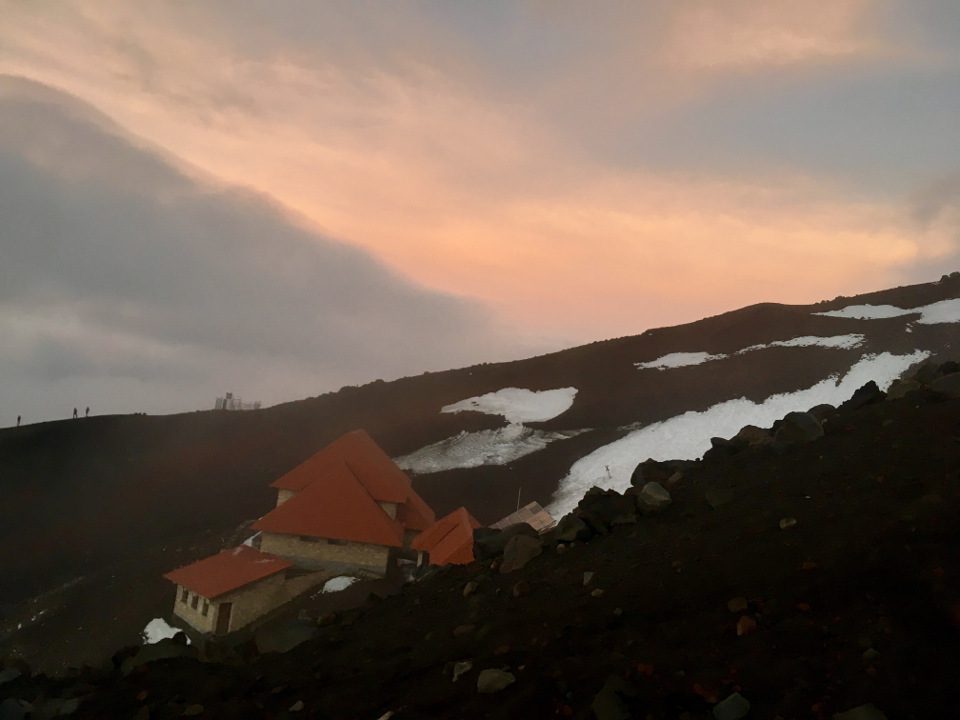
Here are a few suggestions for getting to Cotopaxi’s refuge on your own (and enjoy it*):
- Hydrate the day before going. Drink a minimum of 2 liters of water.
- Get a good night’s sleep so that you can focus all your energy on walking.
- Wear comfortable hiking boots and warm, layered clothes.
- Bring a raincoat with you. It might snow or rain at any moment.
- Once there, remember not to run or do anything that might accelerate your heart rate.
- Wear sunscreen, as the sun at the equator and this high a place burns more than you think.
- Start walking slowly and try to find a comfortable rhythm between your pace and your breathing.
- Try not to stop to rest too often, but rather slow down your pace if you must.
- Take some candy or chocolate bars with you, and stay hydrated. A bite of chocolate will give you a boost of energy!
- Be patient and enjoy the view of the volcano and the surrounding valley.
*Avoid this hike if you have knee problems or heart conditions. Consult your physician prior to your trip if you aren’t sure.

Javier Garcia

Eduardo Silva

Carolina Escobar
START PLANNING YOUR TRIP

Javier Garcia

Eduardo Silva

Carolina Escobar
Get in touch for more
CONTACT US
Travelers Tip: If you don’t want to carry extra weight in your day pack, remember that you can buy snacks and beverages at the Refuge.
Even though walking from the parking lot to the refuge shouldn’t take more than an hour, it will feel more demanding than walking for an hour in any other place. Nevertheless, trust us when we say the trip to the Cotopaxi volcano is totally worth it!
Do you want to visit this amazing National Park? Go for a wonderful hike around Limpiopungo lagoon and observe massive Cotopaxi volcano from the bottom of its slopes. We’ll take you there!
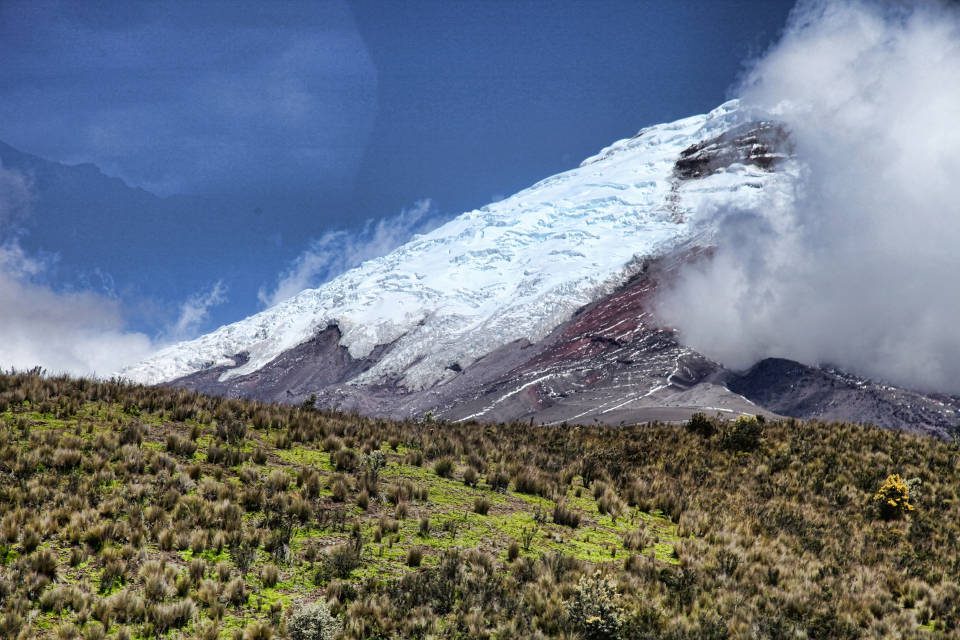
And now that you’ve decided to visit the magical Cotopaxi volcano, why not hop on a plane and discover one of Ecuador’s best-kept secrets, the amazing Galapagos Islands! Take advantage of this once-in-a-lifetime offer now!


